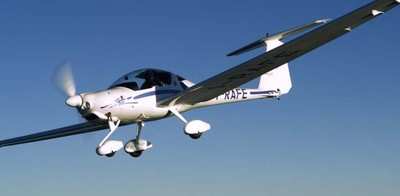Sun, Oct 10, 2021
'Absent Any Design Standard, There Is Not A Concrete Distinction Between A Self-Launching Glider And An Airplane'
EAA has clarified an FAA guidance issue that had been a point of confusion in the certification of experimental self-launching gliders.

When the FAA most recently revised Order 8130.2J, they removed a paragraph that gave inspectors and designated airworthiness representatives (DARs) special instructions on the certification of gliders. While the deletion was for the sake of consistency, it inadvertently removed a reference to a guidance document on what constitutes a self-launching glider.
This is important because it is up to the DAR or inspector to use their discretion in choosing an aircraft’s category and class to assign through its operating limitations. Absent any design standard, there is not a concrete distinction between a self-launching glider and an airplane. The FAA’s definition in FAR 1.1 is simply “a heavier-than-air aircraft, that is supported in flight by the dynamic reaction of the air against its lifting surfaces and whose free flight does not depend principally on an engine.”

This lack of clarity had the potential to complicate certification in the field, with inspectors charged with individually drawing the distinction between airplane and glider.
The FAA policy staff has confirmed to EAA that the previously referenced advisory circular, AC 21.17-2, remains valid guidance despite it not being referenced in the order. They are considering adding the reference back in the next revision.
AC 21.17-2 defines a self-launching glider as:
a) The number of occupants does not exceed two
b) Maximum weight does not exceed 850 kg (1874 pounds), and
c) The maximum weight to wing span squared (w/b2) does not exceed 3.0 kg/m2 (0.62 lb./ft.2)
This definition covers most popular self-launching gliders, such as the Sonex Xenos with the extended wingtip option. The definition does not cover several designs certified as self-launching gliders in Europe under EASA standards, however. EAA supports the FAA’s use of AC 21.17-2, while maintaining flexibility for alternative standards when appropriate.
More News
He Attempted To Restart The Engine Three Times. On The Third Restart Attempt, He Noticed That Flames Were Coming Out From The Right Wing Near The Fuel Cap Analysis: The pilot repor>[...]
Make Sure You NEVER Miss A New Story From Aero-News Network Do you ever feel like you never see posts from a certain person or page on Facebook or Instagram? Here’s how you c>[...]
From 2009 (YouTube Edition): Leading Air Show Performers Give Their Best Advice for Newcomers On December 6th through December 9th, the Paris Las Vegas Hotel hosted over 1,500 air >[...]
Aero Linx: NASA ASRS ASRS captures confidential reports, analyzes the resulting aviation safety data, and disseminates vital information to the aviation community. The ASRS is an i>[...]
“For our inaugural Pylon Racing Seminar in Roswell, we were thrilled to certify 60 pilots across our six closed-course pylon race classes. Not only did this year’s PRS >[...]
 NTSB Final Report: Rutan Long-EZ
NTSB Final Report: Rutan Long-EZ ANN FAQ: Turn On Post Notifications
ANN FAQ: Turn On Post Notifications Classic Aero-TV: ICAS Perspectives - Advice for New Air Show Performers
Classic Aero-TV: ICAS Perspectives - Advice for New Air Show Performers ANN's Daily Aero-Linx (06.28.25)
ANN's Daily Aero-Linx (06.28.25) Aero-News: Quote of the Day (06.28.25)
Aero-News: Quote of the Day (06.28.25)




